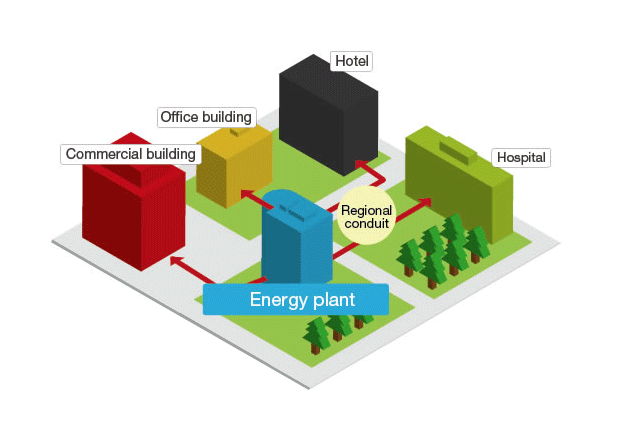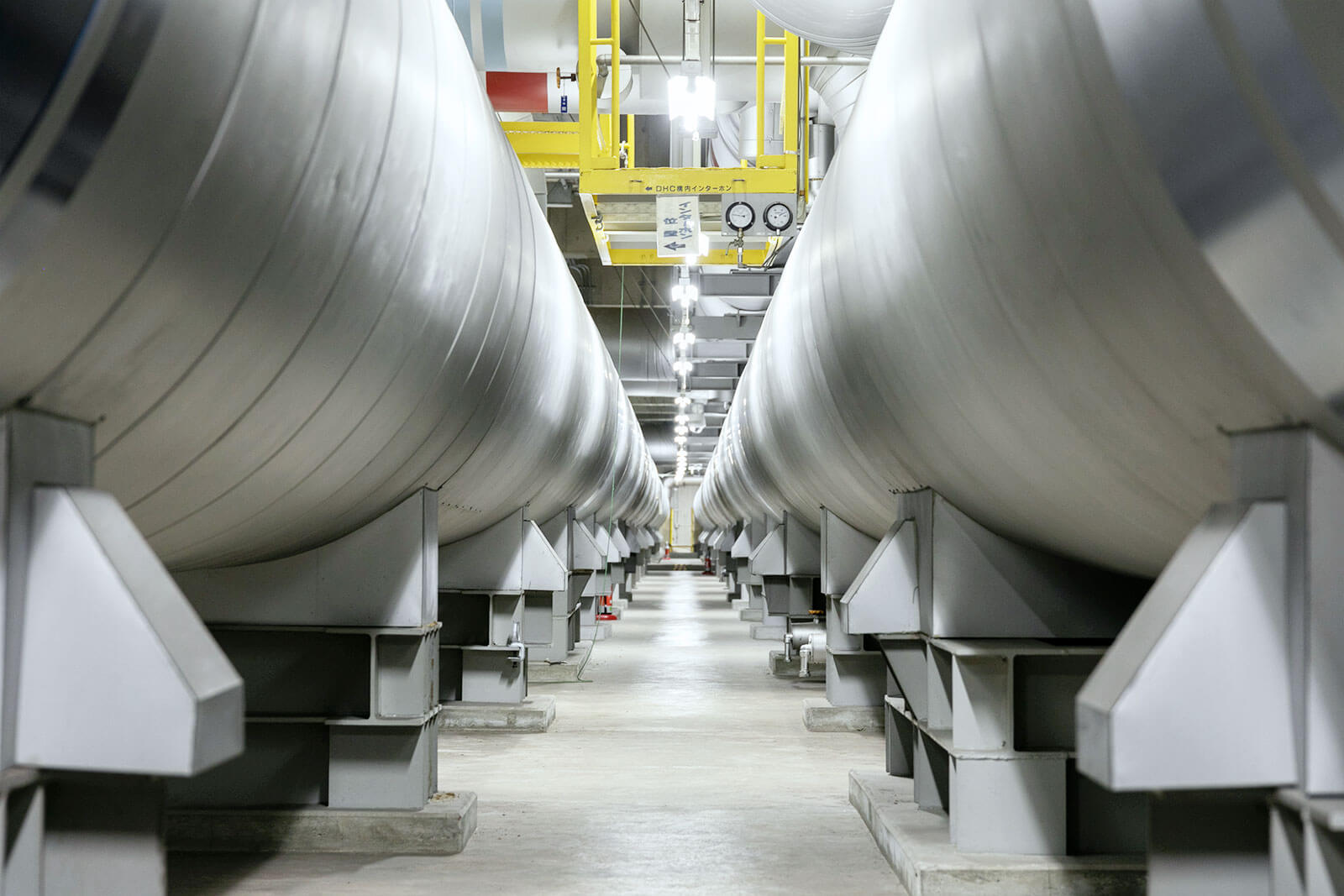The cold water and steam used to supply cooling, heating and hot water to an entire area is produced centrally at plants inside the district. These plants use conduits to supply these necessities round the clock, 365 days a year. In comparison with stand-alone unit heating & coolong systems, for which separate heat-source equipment is installed in individual buildings, DHC systems concentrate heat-source equipment in comprehensive plants, enhancing energy efficiency, preventing pollution and restraining global warming. DHC thus plays a vital role in protecting the environment. Moreover, centralized management of heat-source equipment contributes to a safe and comfortable urban environment, as it prevents urban accidents and improves the appearance of the city.
How DHC Works

Introduction of DHC
In Japan, the Japan World Exposition, Osaka, 1970, held in Suita, Osaka Prefecture, was the touchstone for the launch of DHC. Introduction of DHC began after the world fair, focusing on the redevelopment zone. Today 136 DHC districts are scattered throughout Japan. In the City of Yokohama, DHC operations began with the launch of MM21 DHC’s operations in 1989, serving five locations.
